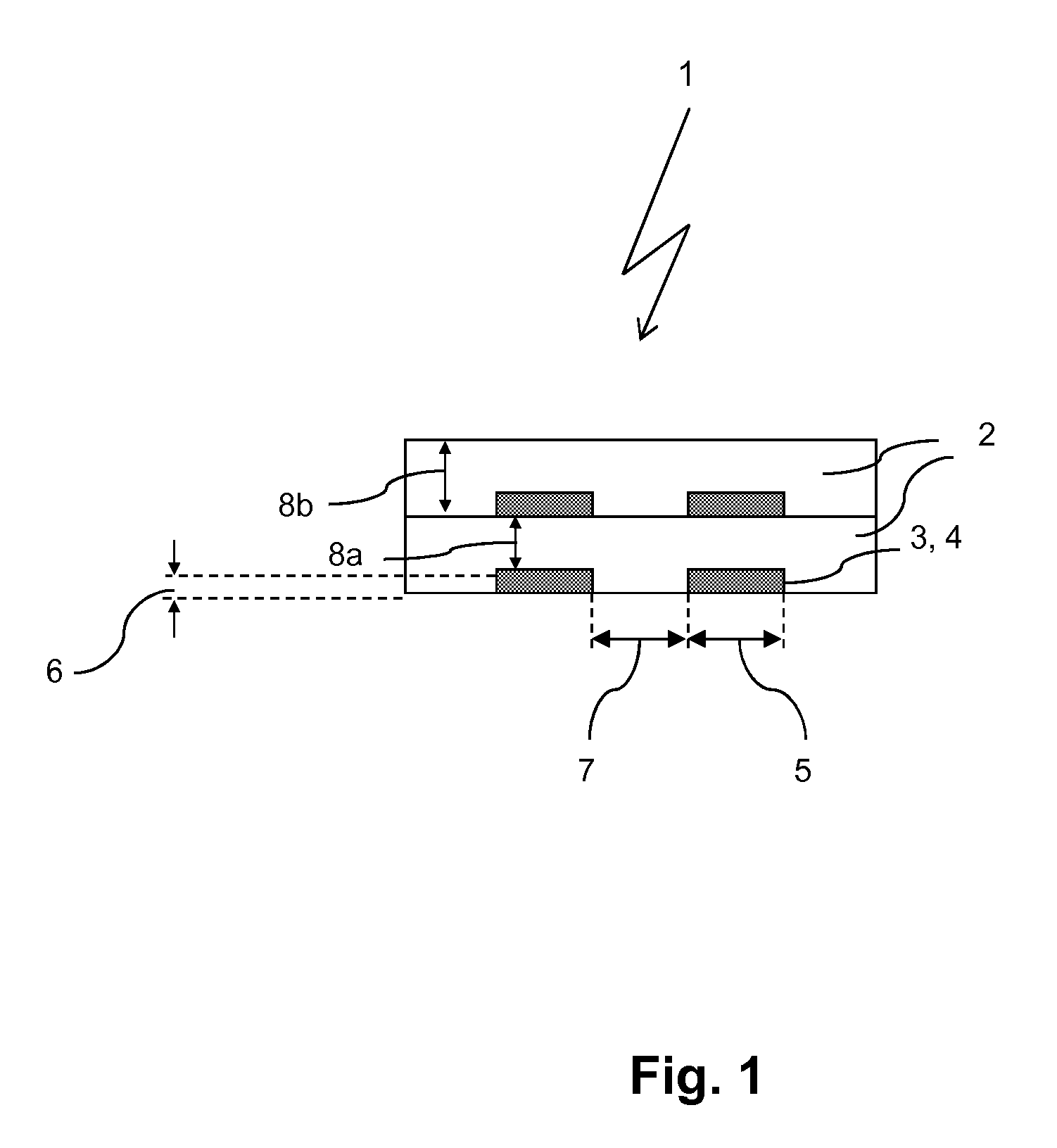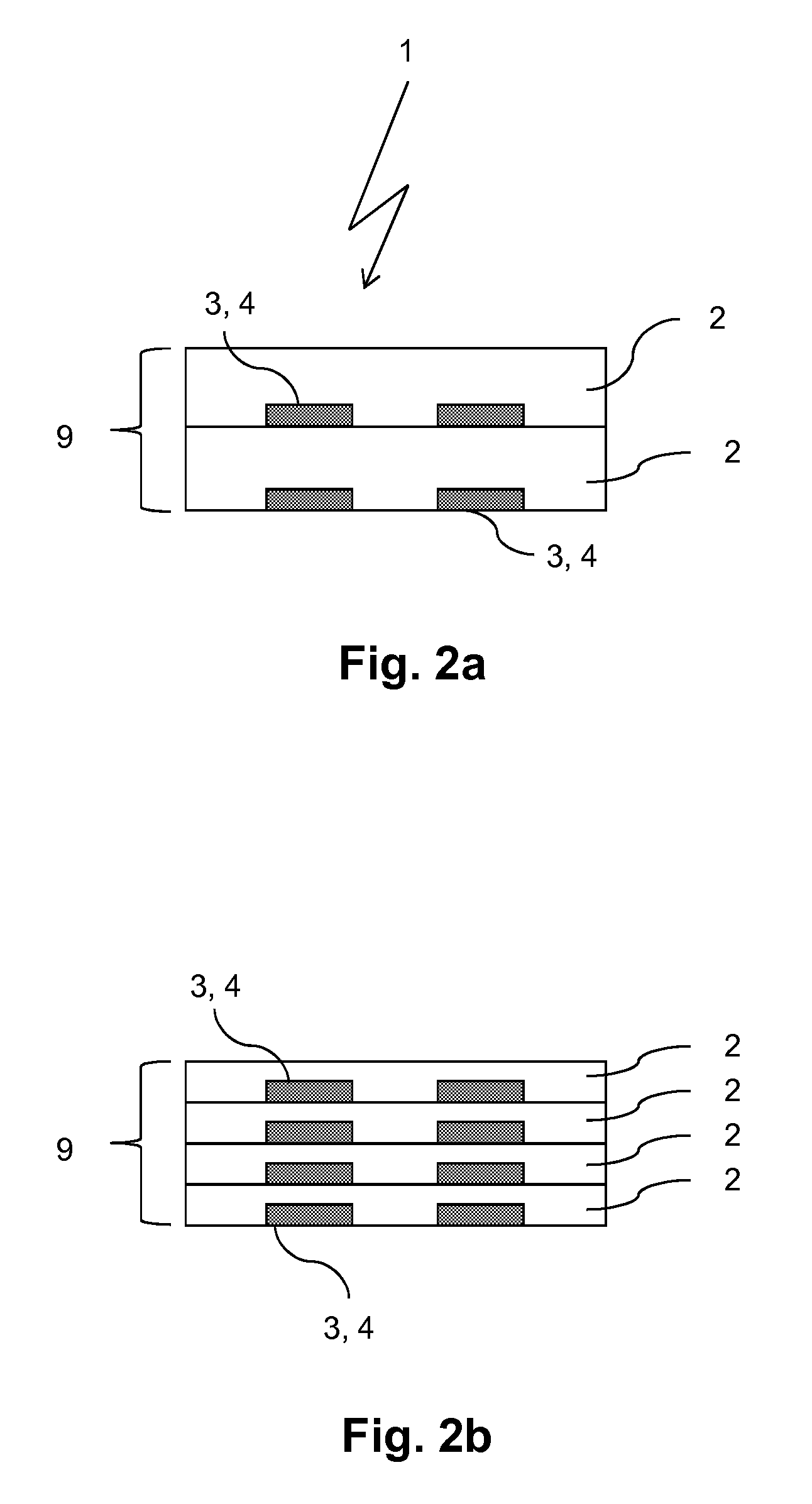Sensor and sensor element
- Summary
- Abstract
- Description
- Claims
- Application Information
AI Technical Summary
Benefits of technology
Problems solved by technology
Method used
Image
Examples
Embodiment Construction
[0061]FIG. 1 shows in a schematic arrangement a standard coil 1 in cross section. In the embodiment example shown in FIG. 1 the coil comprises two layers 2 with windings 3 integrated there.
[0062]The winding 3 of the coil is defined by a line 4 which has a predefined line width 5 and a line thickness 6. The spacing between the lines 4 is denoted as the line spacing 7.
[0063]The spacing between the windings 3 of the layers 2 is denoted as the layer spacing 8a. Reference number 8b marks the thickness of an individual layer 2, and in the sequel will be denoted by 8b.
[0064]FIG. 2a shows once again the customary standard coil 1, from which the coil arrangement according to the invention and represented in FIG. 2b differs quite significantly, namely in that there in place of two layers 2 four layers 2 per unit of cross-sectional surface area 9 are provided. The four layers 2 provided according to FIG. 2b take up the same space as the two layers 2 in the customary standard coil 1 according ...
PUM
 Login to View More
Login to View More Abstract
Description
Claims
Application Information
 Login to View More
Login to View More - R&D
- Intellectual Property
- Life Sciences
- Materials
- Tech Scout
- Unparalleled Data Quality
- Higher Quality Content
- 60% Fewer Hallucinations
Browse by: Latest US Patents, China's latest patents, Technical Efficacy Thesaurus, Application Domain, Technology Topic, Popular Technical Reports.
© 2025 PatSnap. All rights reserved.Legal|Privacy policy|Modern Slavery Act Transparency Statement|Sitemap|About US| Contact US: help@patsnap.com



